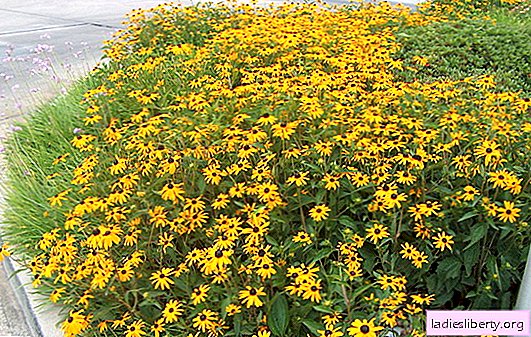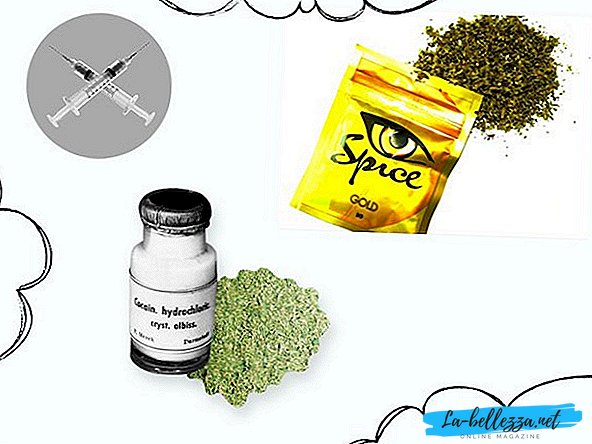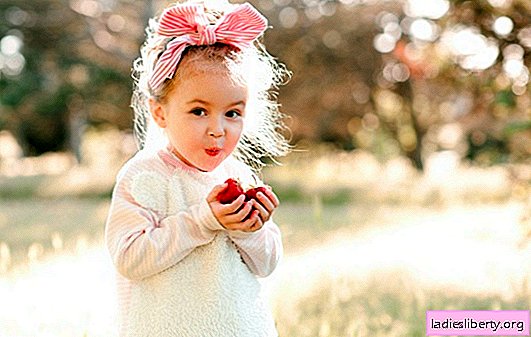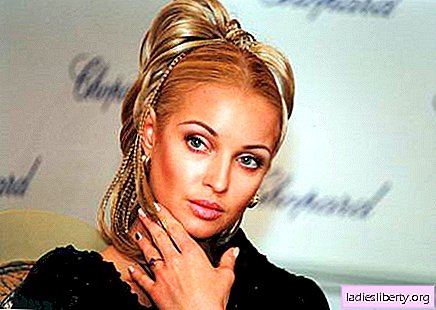
Rudbeckia is an annual or perennial plant from the Astrov family, combining several dozen varieties.
In nature, flowers grow mainly in North America, for decorative purposes they are grown mainly in Europe.
Rudbeckia grows in moist meadows, forest edges and among shrubs.
In garden areas, the plant loves moisture, especially during periods of intensive growth.
The soil must be fertile, not acidic and not heavy.
In all other respects, these flowers are quite unpretentious. In a temperate climate zone, rudbeckia can be grown in sunny or slightly shaded areas.
Photo of rudbeckia: variety selection
All varieties of rudbeckia are divided into annual (biennial) and perennial.
The most popular annuals include:
• Rudbeckia hairy
These flowers are grown as annuals or biennials. The plant has branched stems, leaves in shape resemble an egg. Inflorescences in size reach 10 cm. The color is saturated yellow. Gardeners most often plant low varieties up to 35 cm (Goldflamme), 45 cm (Indian summer) and 60 cm (Goldstrum). Goldflamme variety has a beautiful red-brown center.
• Rudbeckia bicolor
Grows up to 70 cm. Inflorescences are bright, up to 8 cm. They have two rows of orange and yellow flowers, sometimes with a black base. The flowering period falls in June and lasts until the first cold weather. The most popular variety is Herbstewald, a plant up to half a meter high with burgundy-brown flowers up to 7 cm.
• Rudbeckia
Grows to 80 cm. The leaves are oval or elongated-sharp. Color from bright yellow to brown.
• Rudbeckia triloba
A lush, but briefly flowering plant, reaching a height of 140 cm. The leaves are deep green, oval. Inflorescences are small, dark brown in color.
Among perennials distinguish:
• Rudbeckia brilliant (radiant)
Perennial flowers up to 60 cm in height. The leaves are elongated, narrowed. Flowers up to 9 cm, formed from orange and deep red flowers. One of the varieties is rudbeckia varibilis, characterized by orange-yellow, and in the middle - purple flowers. The Goldstar variety is also widespread with golden flowers and a prominent brown center.
• Rudbeckia dissected
It grows to two meters. The flowers are large, up to 10 cm. Formed from several rows of bright and light yellow flowers. The most popular variety is the Golden Ball - terry flowers up to 10 cm in size. The plant is highly frost-resistant. Flowering occurs in late June - early July.
• Rudbeckia Western
Unusual plant resembling a camomile. Some varieties are devoid of reed flowers and look like a black cone surrounded by greenish bracts. Bushes grow to 150 cm.
• Giant rudbeckia
Very tall, drought and frost resistant plant. The leaves are bright green, have a waxy coating. The flowers are yellow in color, grow on a protruding cone-shaped receptacle.
• Glossy rudbeckia
A bush up to two meters with bright shiny foliage. The size of inflorescences is 11-12 cm. The flowers are green and yellow. Very harmoniously on the site look varieties Goldshirem and Herbstonn.
• Rudbeckia is beautiful
The height of the flowers is only 50 cm. The leaves are rounded, flowers up to 10 cm, orange-yellow color.
• Hybrid rudbeckia
Inflorescences are very large (up to 20 cm), the color is yellow or tan. Some flowers have a lilac hue. Flowering begins in June. The plant is frost-resistant, does not need to be covered for the winter.
Planting and caring for ore: sowing (photo)
All plant varieties (except terry plants) breed generatively. Perennials can multiply by division of the roots. If you do not want to engage in seedlings, you can sow seeds directly into the soil. This is done towards the end of June.
Seeds are sown on prepared beds with an interval of 15 cm. A small layer of soil is poured on top, then the beds are sprayed abundantly. In autumn, rosettes with leaves will rise, which next year will turn into lush bushes.
Seedlings
Reproduction with seedlings should begin at the end of March. Seeds are sown in containers and sprinkled on top with a small layer of earth. Then they are gently sprayed with water from a spray bottle.

If you cover the boxes with film and maintain the temperature at 21-22 degrees, seedlings will appear in 1-2 weeks. During this time, the earth should be moistened and periodically ventilated. Condensation from the film must be removed.

As soon as two pairs of leaves appear, seedlings need to be planted over large distances from each other. Then they can begin to leave for several hours on the balcony.

Rudbeckia planting in the ground (photo), further care
Rudbeckia is planted in open land at the end of May when night frosts disappear. For the plant, you need to choose a sunny place with fertile and cultivated soil. Sand is added to the clay soil for digging. In general, it is recommended to enrich any soil before planting with compost. You can also choose a semi-shady area - rudbeckia will grow well here.
The process of planting rudbeckia is presented in the photo. A plant in open ground is planted at a distance of up to 40 cm. If summer has already come, seedlings will quickly take root. If spring has dragged on and the nights are still cold, in the evening the flowers should be covered with agrospan. This is done until the seedlings are accepted, then the cold will no longer be dangerous.
In one place, annuals grow from three to five years, so after planting it is advisable to mulch the earth with a layer of compost (up to 8 cm).
The planting procedure itself does not have any features: first, the soil is enriched with fertile components, then a hole is dug. The plant is dug up with the upper layer of soil, watered and finally mulched.
Caring for rudbeckia (photo)
Rudbeckia is a rather unpretentious plant. It needs moderate watering, as it gets wet with excessive moisture in the soil, but also feels bad with severe drought. It is better to water flowers at one time - in the morning or in the evening. In hot weather, the frequency of watering should be increased.
After watering, the soil is loosened, while removing weeds. Long plants need to be tied to supports in order to avoid fracture of the stems. Wilted inflorescences are removed with part of the peduncle to the upper healthy leaves.

Top dressing
Caring for rudbeckia necessarily includes top dressing. This process is not difficult. Top dressing is carried out every year before flowering. For this, moderate portions of complex fertilizers are used. They are brought in by the earth or sprayed around the inflorescences. The procedure for feeding and caring for ore ore can be seen in the photo. Gardeners often use potash fertilizers before flowering.
At the beginning of the season, flowers can be fertilized with a solution consisting of nitrophoska (tablespoon), potassium sulfate (tablespoon) and agricola-7 (the same amount). The listed components are dissolved in 10 l of water. For 1 m2, 3 l of fertilizer is required. After 14 days, the procedure is repeated.
Caring for ore: pests and diseases (photo)
Rudbeckia often becomes the object of attention of the leaf nematode, which pierces its leaves. Brown spots appear on the foliage, after which it becomes thinner and dies. Fallen damaged foliage must be destroyed immediately. It is important to ensure that it does not accidentally fall into compost. With the defeat of an annual in the autumn, all plant residues need to be burned, and the site should be dug up and shed with a strong solution of potassium permanganate.
With intensive dropping of leaves, the plant must be treated with an insecticide. Against the parasite, such drugs as Bazamide, Nemafos and Nemagon are effective. They are used according to the attached instructions. Powdery mildew is much less common in rudbeckia. The plant is covered with a loose white coating. You can get rid of the disease by spraying with a 1% solution of colloidal sulfur or a solution of copper sulfate (10 l 80 g).

Rudbeckia can harm leaf-eating insects such as caterpillars and larvae. In general, a plant is rarely sick and exposed to pests if planting and caring for ore are carried out according to agrotechnical requirements.











